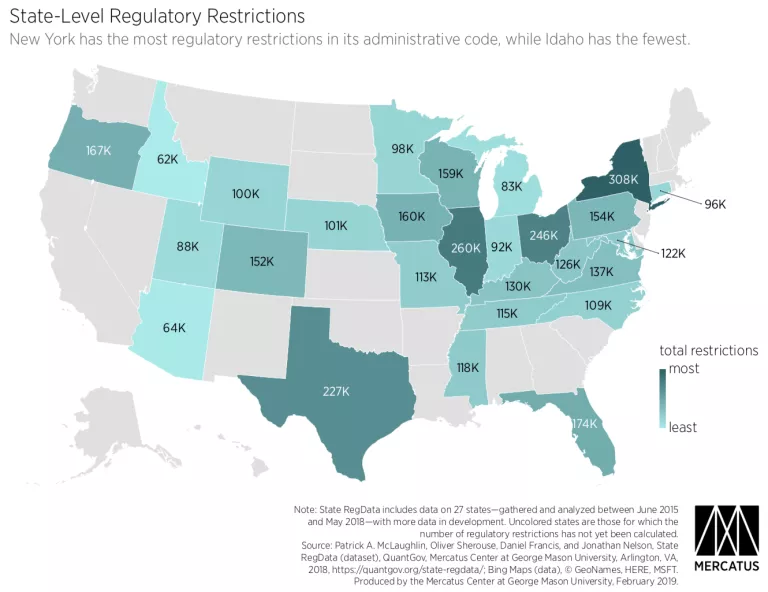- | Regulation Regulation
- | Data Visualizations Data Visualizations
- |
Mapping Regulatory Restrictions in US States
Data show that regulatory accumulation has occurred for decades in the United States at the federal level, but knowledge is limited regarding how much regulation exists among US states. State RegData—a product built on the QuantGov platform—offers a starting point for tracking and comparing regulation and its trends at the state level.
State RegData quantifies regulatory restrictions, which are words and phrases that indicate legal obligations or prohibitions in state administrative codes. Specifically, the dataset counts instances of the words shall, must, may not, required, and prohibited. To assess how relevant a restriction is to an industry, State RegData uses machine learning algorithms to connect regulatory restrictions to industries and sectors of the economy, as defined by the North American Industry Classification System (NAICS).
At the time of this writing, State RegData includes data on 27 states with more in development. Unsurprisingly, State RegData reports significant variety in the amount of regulation among states. New York, the most regulated state in the dataset, has 307,636 restrictions in its administrative code. Illinois, Ohio, and Texas all have more than 200,000 regulatory restrictions. At the other end of the spectrum, Arizona’s regulatory burden is merely 63,919 restrictions. Connecticut, Michigan, Minnesota, and Utah also have fewer than 100,000 restrictions in their administrative codes. Below is a graphical presentation of the current number of regulatory restrictions (in thousands) across the United States.

In one sense, the amount of regulation is not necessarily good or bad. More regulation could reflect a larger population or the presence of industries that may require a greater amount of oversight. Additionally, State RegData weights each restrictive term equally and does not distinguish whether specific restrictions are more burdensome than others.
Nevertheless, regulation is a tool that affects economic outcomes. As the amount of regulation increases, the volume of duplicative or obsolete rules is also likely to grow. Furthermore, regulations can create unintended consequences or have unpredictable interactive effects.
State RegData permits researchers to compare regulatory burdens among states and identify economic trends and relationships. Such information can inform policymakers about the economic effects of regulation and improve regulatory decision-making.

